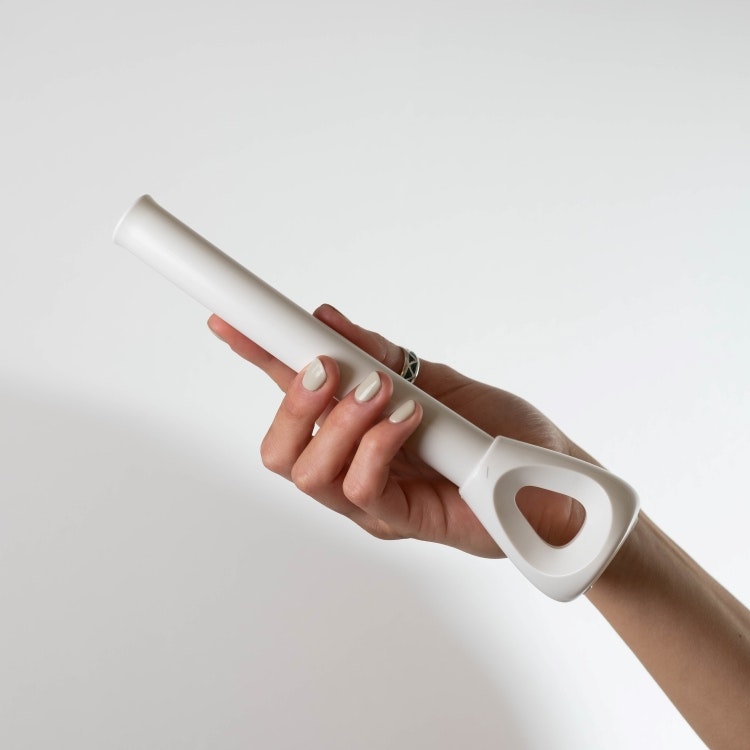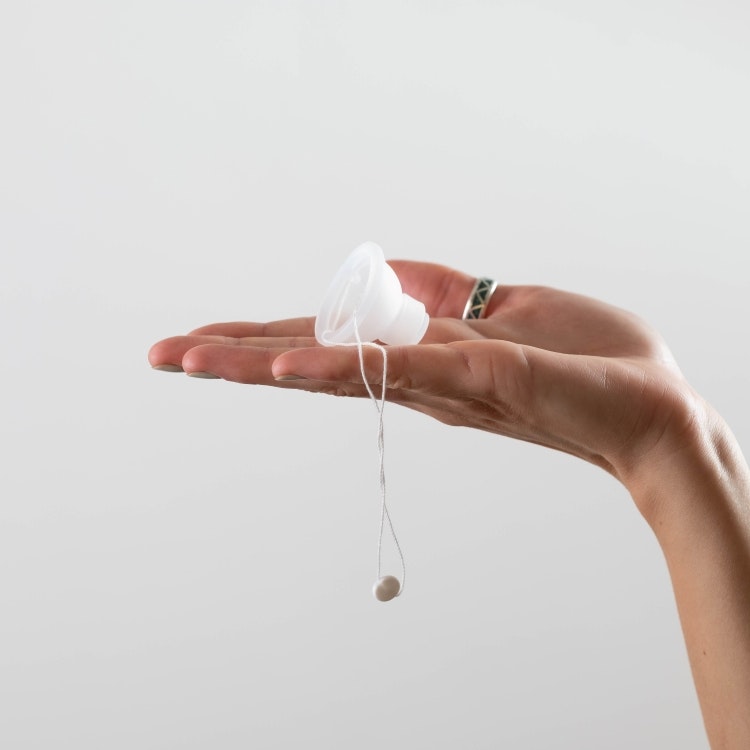Béa Fertility has launched an at-home fertility device with a “simple and intuitive” user experience and accessible price point.
The team of 12 started working on the concept in 2020, after identifying a gap in the market for early-stage fertility treatments. Generally, if patients go to a GP with suspected fertility issues, they are advised to continue trying for another year before being referred for further treatment and investigations, according to Béa Fertility’s chief product officer George Thomas.
He also notes that GPs do not refer patients if their partner already has children or if they have a high BMI. According to the Human Fertilisation and Embryology Authority, the number of patients choosing private fertility treatments is on the rise, with 63% of IVF funded privately in 2021 compared to 52% in 2019.

“Robust, clinically proven, and well understood”
Both private and public-funded fertility routes often involve patients jumping from natural methods to more “invasive treatments”, says Thomas. This includes IVF, which involves egg harvesting and hormone simulation, and IUI or artificial insemination, where washed semen is injected into the uterus.
Thomas claims Béa Fertility’s method falls “somewhere in the middle” of the natural and invasive routes. It is based off intracervical insemination (ICI), which used to be popular in UK fertility clinics but has “fallen off the radar” since the 1970s, according to Thomas.
He describes it as “a really robust, clinically proven, and well understood treatment” and suspects that it became less popular because fertility clinics are “businesses that need to make money”. In comparison to IUI and IVF, ICI treatments in clinics are cheaper and take longer, which is why Thomas believes it isn’t a favourable choice.

Béa Fertility’s solution is a device comprising an applicator and a cervical cap, similar to a menstrual cup, that “concentrates and holds semen right at the cervix so that sperm can only swim in one direction, towards the uterus”, explains Thomas. The method syncs up with the user’s natural menstrual cycle without a need for hormones.
In a bid to make the user experience “as simple and intuitive as possible”, Thomas says the instructions have been refined to three simple steps: use a funnel to pour the semen into the cap, insert the device into the body and twist the handle to deploy it.

A “reset moment”
The company ran a human factor engineering process in February 2022 with the initial concept and design, where real people of the right age and profile tried to use it on a latex cervical model. At this stage, Thomas says it became apparent that the device was “very fragile” as the device was “snapping in half” inside the model.
He defines this as the “reset moment” when the team brought in product design experts 3form Design to iron out the kinks and make it market ready. Key changes were halving the number of components, which helped keep costs down, as well as “removing little joints” by merging the two halves of the applicator into “one solid piece of plastic”, Thomas reveals.

Choosing the materials for the cap was a challenge since it would be folded into a medical grade plastic tube, sometimes for several months. Thomas explains how it had to be able to retake its original shape when deployed into the cervix and had to be made of “medical grade silicon” so as not to harm the sperm or the vagina.
The funnel was initially designed to be “elegant” and look like “part of the design”, which resulted in people trying to insert the device into the model with the funnel still attached during user testing, says Thomas. After making the funnel bigger, people were still trying to insert it into the models, so the next solution was further increasing the size and making it “bright orange” as “a warning colour” to convey that it is not part of the device, he adds.
Following several more design iterations and a lot of user testing, the final design was completed in October 2022 and ready to be manufactured and go through regulatory testing.

“Similar results at a tenth of the cost”
Thomas identifies one of Béa Fertility’s main aims as “taking away barriers so that people can easily access the treatment”, which the company sought to do through the cost. He says that refining the number of components meant “fewer tools, fewer parts to manufacture each time and fewer parts to assemble”.
He believes that, while “designing for simplicity” often means increased costs early on in the process, “it pays off in the long run as you scale up”.
Currently, it costs £350 for three cycles (roughly three months) of Béa Fertility’s treatment. According to the NHS, IUI can cost up to £1600 per cycle, while IVF can cost £5000 or more.
Thomas says there are “good reasons” why come people should do IVF, reinforcing that Béa Fertility isn’t a “direct replacement”. However, he highlights that in comparison to IUI, data shows that ICI methods deliver “similar results at a tenth of the cost”.

Next steps
As it stands, the device is disposed of after a single use which is “best practice with medical devices like this”, according to Thomas. He explains that “because of the specific way the cap has to be folded into the device”, users would not be able to reset it themselves at home. He also notes that, if the cap was to become contaminated with cleaning products or other bodily fluids, it could harm the sperm or cause infection.
Over the next few years, Thomas plans to make improvements on recyclability and reusability as most of the parts are recyclable but, because it technically becomes “medical waste” after use, it cannot go into the general recycling system.
Since launching, a few hundred people have used the device and Béa Fertility has had its first positive pregnancy reports from a range of families, including those from the LGBTQ community.

- Design disciplines in this article
- Industries in this article
- Brands in this article










